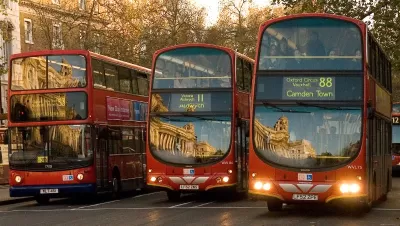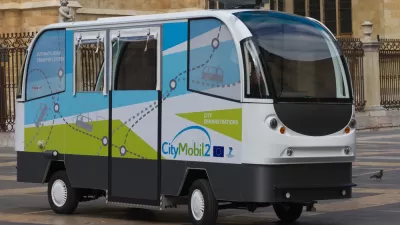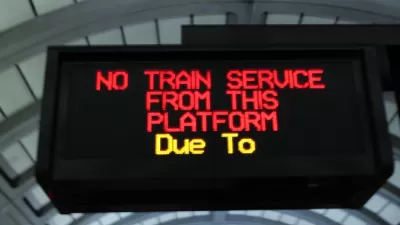Transit agencies are increasingly turning to branding and advertising to improve their images. But can conservative bureaucracies embrace what it means to be "cool"? More importantly, can they attract riders?

"Today, transit agencies are abandoning the passive approach to ridership. A confluence of design technologies, communication technologies, new trends in urban development and—perhaps most importantly—a cultural shift among young, smartphone-wielding city-dwellers has led to a new, more sanguine approach to the promotion of transit."
"From the standpoint of corporate culture, getting transit agencies to embrace innovative marketing techniques entails a serious shift of gears. For most of their history, transit agencies have focused on service and on the maddeningly complex tasks of routing, scheduling, and deployment. Managers at many transit agencies have, historically, cared more about whether buses arrive at their stops on time than about how many people get on."
“'You can’t brow-beat people into taking transit,'” said Darrin Nordhal, author of 'Making Transit Fun!: How to Entice Motorists from Their Cars (and onto their feet, a bike, or bus).' Rather than appeal to the public’s sense of altruism, agencies must, he said, appeal to their sense of hedonism: 'Take it because it’ll be fun. It can add joy to your life and give you time for other things that you find delightful.'”
FULL STORY: Smart Branding Attracts the Masses to Mass Transit

Maui's Vacation Rental Debate Turns Ugly
Verbal attacks, misinformation campaigns and fistfights plague a high-stakes debate to convert thousands of vacation rentals into long-term housing.

Planetizen Federal Action Tracker
A weekly monitor of how Trump’s orders and actions are impacting planners and planning in America.

In Urban Planning, AI Prompting Could be the New Design Thinking
Creativity has long been key to great urban design. What if we see AI as our new creative partner?

King County Supportive Housing Program Offers Hope for Unhoused Residents
The county is taking a ‘Housing First’ approach that prioritizes getting people into housing, then offering wraparound supportive services.

Researchers Use AI to Get Clearer Picture of US Housing
Analysts are using artificial intelligence to supercharge their research by allowing them to comb through data faster. Though these AI tools can be error prone, they save time and housing researchers are optimistic about the future.

Making Shared Micromobility More Inclusive
Cities and shared mobility system operators can do more to include people with disabilities in planning and operations, per a new report.
Urban Design for Planners 1: Software Tools
This six-course series explores essential urban design concepts using open source software and equips planners with the tools they need to participate fully in the urban design process.
Planning for Universal Design
Learn the tools for implementing Universal Design in planning regulations.
planning NEXT
Appalachian Highlands Housing Partners
Mpact (founded as Rail~Volution)
City of Camden Redevelopment Agency
City of Astoria
City of Portland
City of Laramie





























